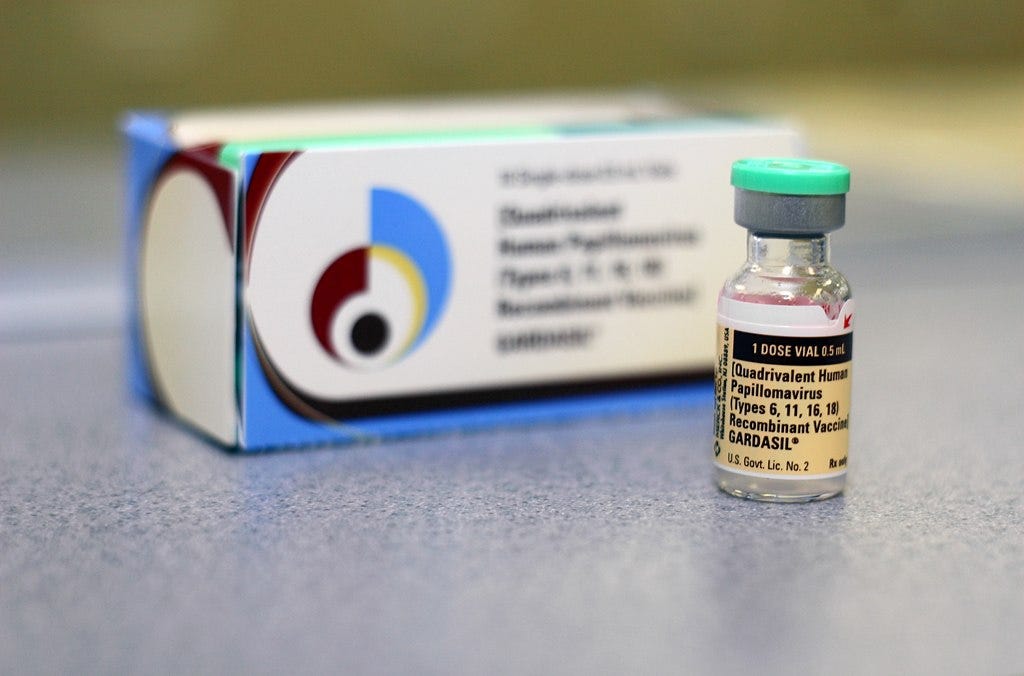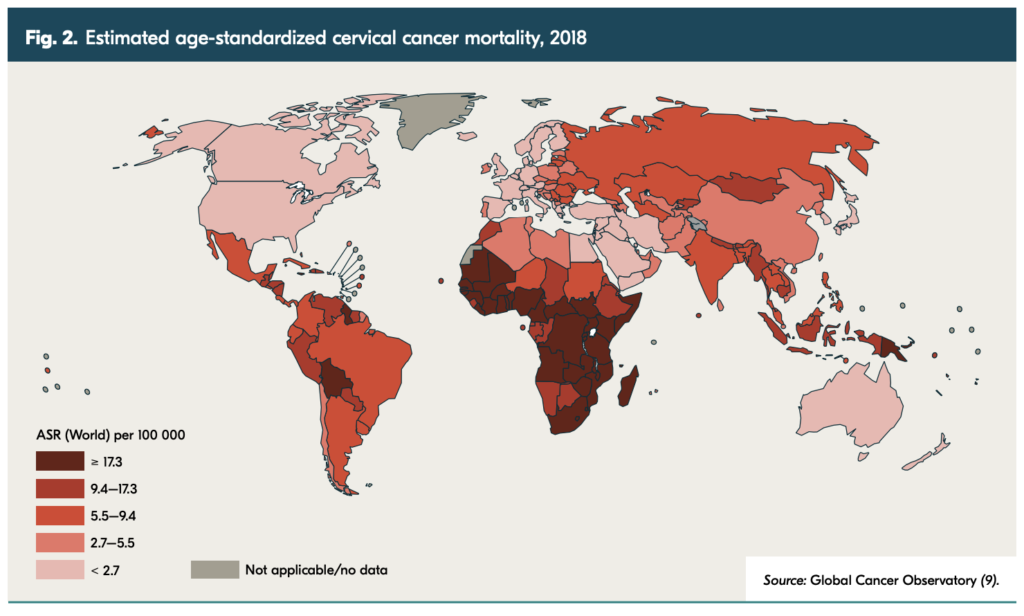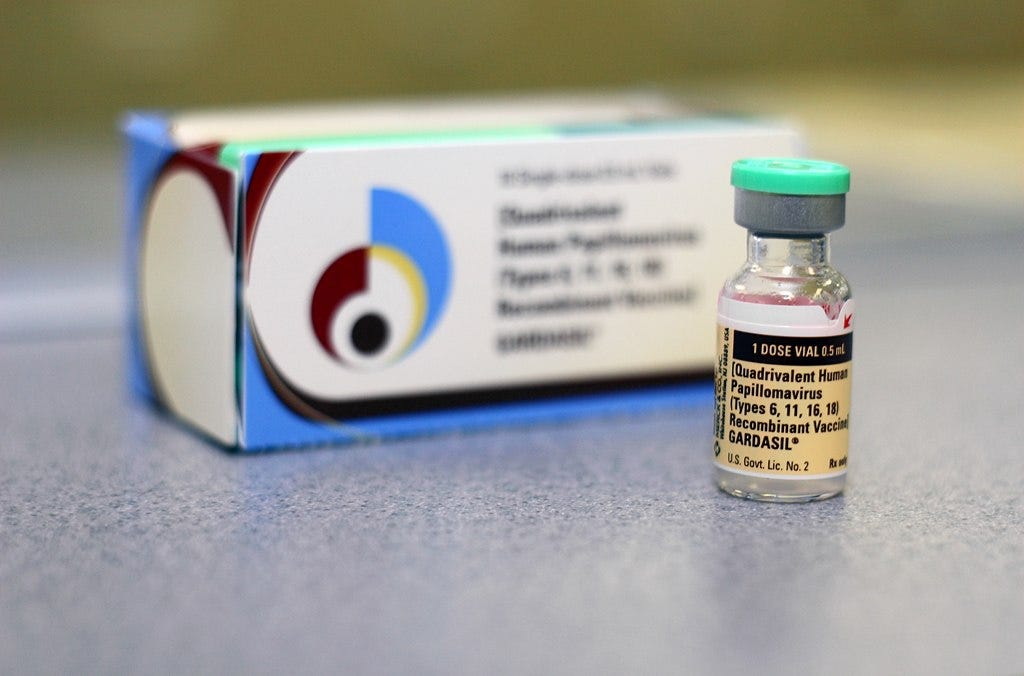the health strategist
institute for continuous health transformation
and digital health
Joaquim Cardoso MSc
Chief Researcher & Editor of the Site
April 27, 2023
ONE PAGE SUMMARY
Gavi, the Vaccine Alliance, has pledged $142 million in new funding to expand global coverage of the human papillomavirus (HPV) vaccine, increasing its total investment to $600 million by the end of 2025.
- The move is expected to help reach 86 million adolescent girls by 2025, preventing over 1.4 million future deaths from cervical cancer.
- Gavi’s investment is a renewed commitment to advance the World Health Organization’s Global Strategy to Accelerate the Elimination of Cervical Cancer approved by the World Health Assembly in 2020.
The new initiative focuses on providing assistance to primary health care systems to introduce the HPV vaccine into routine immunization schedules, especially in low- and middle-income countries where access to screening and treatment is limited.
- Cervical cancer ranks as the fourth most prevalent cancer among women globally, with Africa having the highest incidence and mortality rates.
Gavi’s investment comes days after a global coalition of global health institutions announced a partnership to halt the global backsliding in childhood vaccination rates caused by COVID-19.
DEEP DIVE

Gavi Pledges $142 Million In New Funding To Prevent 1.4 Million Deaths From Cervical Cancer
Health Policy Watch
28/04/2023
Stefan Anderson
Gavi, the Vaccine Alliance has pledged $142 million in additional funds to expand global coverage of the human papillomavirus (HPV) vaccine, increasing its total investment to $600 million by the end of 2025, the organization has announced. Gavi said it expects its new investment to help reach 86 million adolescent girls by 2025, preventing over 1.4 million future deaths from cervical cancer.
The pledge marks a renewed commitment to advance the World Health Organization’s Global Strategy to Accelerate the Elimination of Cervical Cancer approved by the World Health Assembly in 2020 — the first-ever global commitment to eradicate a cancer.
“[Vaccines] can prevent up to 90% of all cervical cancer cases,” Gavi said in its statement Thursday on the new initiative. “It is the key intervention towards achieving elimination of cervical cancer.”
While the HPV vaccine is readily available in Gavi’s portfolio, supply bottlenecks and pandemic era disruptions of routine immunization programmes have hamstrung global efforts to increase vaccine coverage, especially in low- and middle-income countries where access to screening and treatment is limited.
Over 100 million adolescent girls received at least one dose of the HPV vaccine between 2006 and 2017 — but 95% of them were in high-income countries, leading to a staggering nine in ten cervical cancer deaths occurring in low-and middle-income countries in that same period. Overall HPV vaccine coverage was just 12% by the end of 2021.
“There are still millions of adolescent girls at risk of contracting cervical cancer — a life-threatening yet vaccine-preventable disease that disproportionately kills women in lower-income countries,” said Aurélia Nguyen, chief programme strategy officer at Gavi. “Taking urgent action to ensure no girl is left behind is imperative from a gender and equity perspective.”

New push to assist countries to introduce the HPV vaccine into routine immunization
Over the next three years, the revitalized push by Gavi and partner organisations like the WHO and UNICEF will focus on providing assistance to primary health care systems to introduce the HPV vaccine into routine immunization schedules and helping to catch up on vaccinations missed during the COVID-19 pandemic. HPV vaccination rates, which rely heavily on delivery through schools, were hit particularly hard by the lockdowns caused by the pandemic.
The additional funding announced on Thursday includes $33 million for enchanced technical assistance for the planning and implementation of HPV vaccine integration into regular immunization schedules, $40 million for strengthening delivery of the HPV vaccine and strengthening health systems, and $69 million in cash support for new introductions. Key countries that will receive support in the coming year include Bangladesh, Cambodia, Ethiopia, Indonesia, Kenya, Nigeria, Togo, and Zambian, Gavi said.
“The COVID-19 pandemic and school closures have also hit hard and set back vital progress,” Nguyen said. “The HPV vaccine has amongst the highest impact of all Gavi-supported vaccines, saving millions of lives and helping to protect the future of adolescent girls across the world.”
Gavi’s financial commitment comes days after a powerful global coalition of global health institutions, including Gavi, announced a partnership to halt the global backsliding in childhood vaccination rates caused by COVID-19, which was criticized for not including any new funds to support its goals.

Global momentum to tackle cervical cancer continues to grow

Momentum to tackle cervical cancer deaths has been building since the World Health Organization launched the Global Strategy to Accelerate the Elimination of Cervical Cancer in 2020 — the first-ever global commitment to eradicate a cancer.
WHO estimates the successful eradication of cervical cancer can avert 62 million deaths by 2040. Left unchecked, cervical cancer deaths will rise by nearly 50%, the UN health body said.
“Elimination is within the reach of all countries,” WHO director general Tedros Adhanom Ghebreyesus said in announcing the launch of the eradication roadmap in November 2020. “Girls who are born today will live to see a world free of this disease.”
However, shortly after that, the COVID pandemic enveloped the world — and while the elimination strategy was approved by the World Health Assembly in May 2020 — it was consigned to a backburner as countries battled the SARS-CoV2 virus.
A woman is estimated to die every two minutes from cervical cancer, despite the disease being preventable, treatable, detectable, and curable. HPV is the root cause of over 95% of global cervical cancer cases, and causes nearly half of female cancer deaths in sub-Saharan African countries.
Cervical cancer ranks as the fourth most prevalent cancer among women globally, with approximately 570,000 new cases and 311,000 deaths reported worldwide in 2018. The highest incidence and mortality rates are prevalent in Africa, where the rates are 7 to 10 times higher compared to the western world.
The prevalence of cervical cancer is reflective of inequalities among different populations, which depend on access to a national vaccination program, population-based cervical cancer screening, and quality treatment. These resources are not equally available to all, resulting in disproportionate deaths due to the disease.

WHO’s one-vaccine recommendation raises eradication hopes
In April 2022, the WHO’s Strategic Advisory Group of Experts on Immunization (SAGE) finalised an extensive evidence review on the HPV vaccine which concluded that a single shot was enough to prevent HPV in girls and women between the ages of nine and 20.
While women above the age of 21 are still required the traditional two dose schedule, SAGE’s updated guidance raised hopes that the additional doses freed up by the new assessment could provide a shot in the arm to global vaccination efforts. The WHO described the development as “game-changer”.
“This has been an important step towards vaccinating and protecting more women and girls,” said Dr Kate O’Brien, Director, Department of Immunization, Vaccines and Biologicals, World Health Organization. “With new evidence available on vaccine performance, WHO updated its recommendations in 2022 to give countries the option of a one-dose schedule of the HPV vaccine.”
“Girls are our future scientists, writers, sports champions, and innovators,” she said. “We want to see every girl and woman protected from cervical cancer throughout her lifetime.”
Originally published at https://healthpolicy-watch.news on April 28, 2023.












